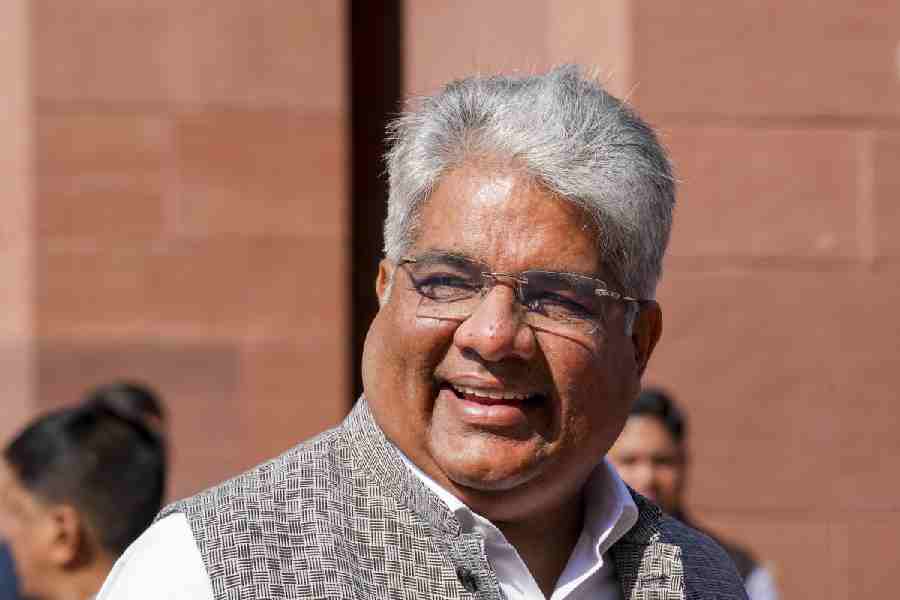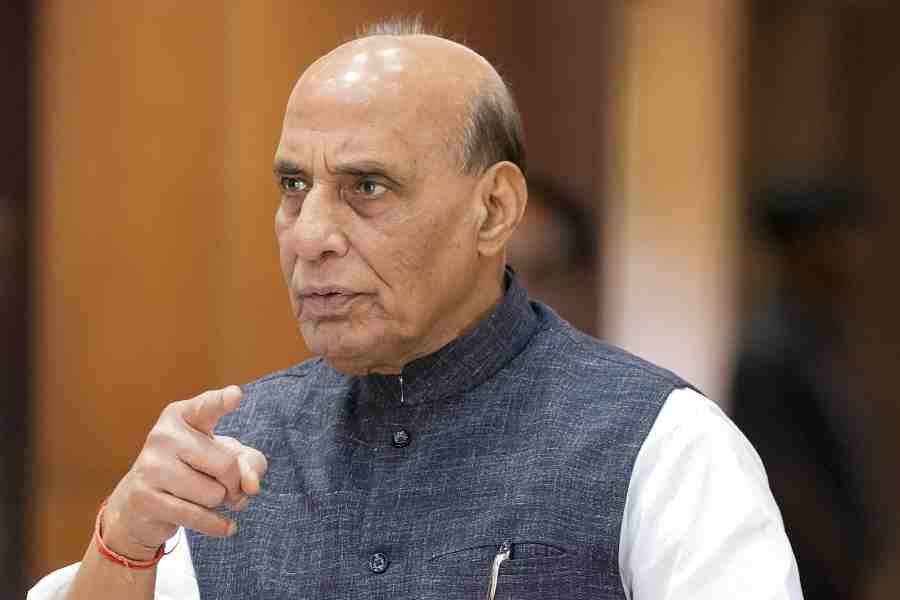Despite signs of an end to the current recession in the American economy, deeper problems persist ensuring continued global economic stagnation. Incidentally, this is hardly good news for the Indian economy whatever the claims of the last budget. Whatever cyclical variations there may be, a new 'long wave' of expansion in the world economy akin to the Golden Age period of 1948-73 is not remotely on the cards. So much then for the claims of the 'New Economy' wherein the new information technologies were supposed to usher in an era of high and sustained growth and prosperity for all. The 1997-2001 upturn fuelled such conjectures but the downturn since then (which preceded September 11, 2002) dashed such expectations. The basic contradictions of capitalism have again come to the fore.
With Japan mired in a stagnation that has lasted for over ten years, the locomotives of the world economy can only be the United States of America and/or the European Union. Through the Nineties the US kept the world economy going through an investment boom, particularly between 1996 and 2001, that resulted in major productivity gains. The fruits of this were never shared equitably within the US but th-at was another matter. Since 2001, however, investment has been falling and productivity levels have come down.
Behind this decline is the decline in the rate of profit that began to show itself from 1997 onwards. Business profits declined from $ 858 billion in the third quarter of 1997 to $ 761 billion in the second quarter of 2001. Between 1997 and 2001, private sector wage payrolls rose by 30 per cent while the gross domestic product rose by 21.5 per cent. At the same time the capital-output ratio increased by 17 per cent in volume but only 10 per cent in value.
Both these trends together ensured a declining profit rate. Since investment nonetheless continued it was only a matter of time before over-accumulation would show up and excess capacity exacerbated. By August 2001, the rate of utilization of production capacity was 76.2 per cent in the US, the lowest since the 1982 recession. Excess capacity was manifest most strongly in the high technology sectors that were supposed to propel the 'New Economy', dropping from 88 per cent in 1995 to 63.4 per cent in 2001.
Fortunately, the absurd stock market boom is playing itself out. It should now be clear that stock dividends and capital gains obtained through shares cannot indefinitely diverge from the actual profit levels that they anticipate. This stock market correction started to take place before September 11. First, in 2000 the upward movement in indexes stopped, and then contrary to prognostications at the time, instead of going up again, they moved downwards throughout 2001.
The Nasdaq index fell from 5,000 to 2,000 and then to 1,700. The 1996-2001 upturn was fuelled by massive consumption expenditure as well, with the very large majority of households devoting 100 per cent of their incomes (or even more) to expenditure. The willingness to go into debt was partly explained by the 'wealth effect' of the stock market boom. But the end result was an unsustainable increase in private debt. The third structural weakness of the US economy, besides stock market mania and low domestic savings, has been its burgeoning current account deficit, which has reached $ 450 billion or 4.5 per cent of annual gross national product. In short, foreign savings were being drawn in to fuel growth in the US.
But for how long can the US continue to attract foreign investors? With domestic investment declining, trade deficits putting pressure for the purpose of allowing a fall in the value of the dollar, and profits falling, the situation is very dangerous. Ironically, September 11, even as it has reinforced the shift from investment to consumption has also promoted a military Keynesianism ($ 100 billion have already been allotted for spending) that could well mitigate the world economy's problems, provided that foreigners can be persuaded to keep on covering the US trade deficit. This is where politics comes in. The EU and Japan must be persuaded, cajoled or bullied into undertaking their share in the 'global effort to fight terrorism'. Otherwise, the US might feel pushed to devalue the dollar thereby exporting its recession to Europe and Japan.
As for the EU playing the locomotive role (at least for a time) in the world economy, this is highly unlikely given the difficult state of its own economic situation today. Between 1996 and 2000, seven million jobs were created and official unemployment fell by 3.5 million. Interestingly, this improvement came about not by the better application of neo-liberal dogmas but by their largely involuntary relaxation due to factors external to national government and EU policy choices.
First, the value of European currencies relative to the dollar fell from mid-1997 leading to a surge in exports whose positive impact was reinforced by an unexpected rise in consumer spending because real incomes in Europe rose as a result of otherwise low wage increases being better because inflation was even lower. This surge, in turn promoted further investment with its multiplier effects, and thus a rise in government revenues and lower deficits.
Fortuitously, classical Keynesian mechanisms were at work and came to the rescue, in spite of official policy commitments shaped by neo-liberal ideology. Instead of the dogma that there first had to be a 'stabilization' of public finance through austerity measures so as to promote an economic recovery, the reverse happened - it was a Keynesian-style recovery that reduced the deficit and 'stabilized' public finance.
Indeed, it was precisely because of these positive circumstances, that the introduction of the euro as a single currency did not have the feared negative effects. The euro turned out to be a weaker currency vis-à-vis the dollar than anticipated or intended. But now that the party in the US is over, (even if there is a mild upturn, there will be no 'boom' of the late Nineties type) the European economy cannot hope to rectify matters by pursuing the neo-liberal Stability Pact to which even the Social Democratic governments are committed.
Wage freezes will worsen matters. Declining investment patterns have a dampening effect that is stronger than otherwise because half of the world's trade is in capital goods which much more directly reflect fluctuations in investment. If reducing taxes is one way to stimulate the economy, how is this possible when the Stability Pact demands that fiscal deficits be lowered to less than 1 per cent of a member-country's GDP?
However, there are no signs that the neo-liberal dogmas that guide the EU's long-range policy perspectives (and for that matter, US government thinking) are being jettisoned. The main preoccupations remain wage freezes, labour market flexibility, that is, more lay-offs, less secure jobs and lower pay-packets, more liberalization and privatization, with no imposition of serious controls on capital flows of even the short-term and volatile kind anywhere in sight. One can only hope that somehow, again, practice will diverge from theory.
But the danger from Japan's and Europe's point of view of the new US military Keynesianism under George W. Bush is that it is very likely to be organized in such a way as to reinforce the trend of the Nineties whereby corporate US has grown stronger and more powerful at the expense of its multinational rivals whose 'home bases' are European and Japanese.
The author is currently visiting professor at the Academy of Third World Studies, Jamia Milia Islamia, New Delhi
 Tuesday, 30 December 2025
Tuesday, 30 December 2025









